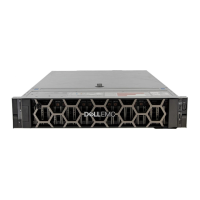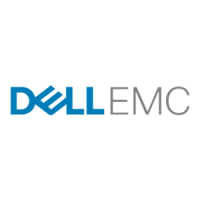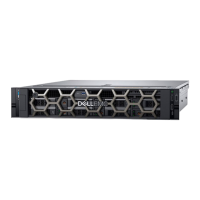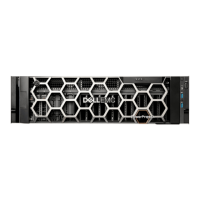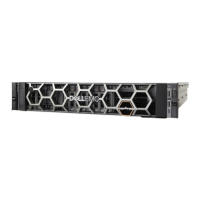Status Severity
Under-temperature alarm Fault – critical
I
2
C bus failure Fault – loss of redundancy
Ops panel communication error (I
2
C) Fault – critical
RAID error Fault – critical
SBB I/O module fault Fault – critical
SBB I/O module removed Warning
Drive power control fault Warning – no loss of drive power
Drive power control fault Fault – critical – loss of drive power
Insucient power available Warning
Thermal considerations
Thermal sensors in the 5U84 enclosure and its components monitor the thermal health of the storage system.
NOTE:
• Exceeding the limits of critical values will activate the over-temperature alarm.
• For information about 5U84 enclosure alarm notication, see 5U alarm conditions.
CLI port connections
ME4 Series Storage System controllers feature a CLI port employing a 3.5mm stereo plug and a mini-USB Type B form factor. For more
information about connecting a serial cable, see Appendix A of this manual.
Fault isolation methodology
Dell EMC ME4 Series Storage Systems provide many ways to isolate faults. This section presents the basic methodology used to locate
faults within a storage system, and to identify the pertinent CRUs aected.
Use the ME Storage Manager to congure and provision the system upon completing the hardware installation. As part of this process,
congure and enable event notication so the system will notify you when a problem occurs that is at or above the congured severity (see
the topic about conguring event notication within the Dell EMC ME4 Series Storage System Administrator’s Guide). With event
notication congured and enabled, you can follow the recommended actions in the notication message to resolve the problem, as further
discussed in the options presented in the following section.
Fault isolation methodology basic steps
Following is a summary of the basic steps used to perform fault isolation and troubleshooting:
• Gather fault information, including using system LEDs as described in Gather fault information
• Determine where in the system the fault is occurring as described in Determine where the fault is occurring.
• Review event logs as described in Review the event logs.
• If required, isolate the fault to a data path component or conguration as described in Review the event logs .
42
Troubleshooting and problem solving

